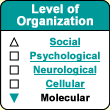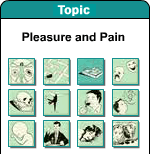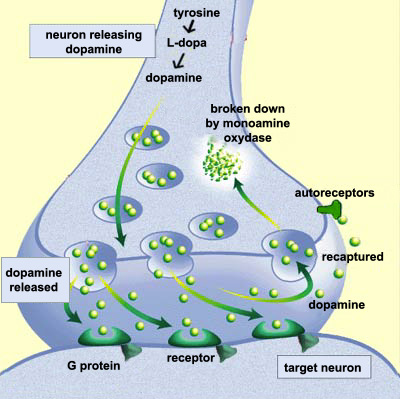The diagram to the right shows the major steps in the action of the neurotransmitter dopamine. First, dopamine is synthesized from the amino acid tyrosine. The dopamine is then stored in the synaptic vesicles of the presynaptic neuron until it receives action potentials that cause it to release the dopamine into the synaptic gap by a process called exocytosis.
On the post-synaptic neuron, the dopamine then binds to specific receptors that have five different sub-types, designated D1 to D5 , and that are paired with GTP-dependent proteins inside this neuron.
The dopamine is subsequently reabsorbed by transporters on the terminal button of the dopaminergic presynaptic neuron. There the dopamine is either stored again in vesicles or broken down by a mitochondrial enzyme called monoamine oxydase.
Dopamine can also bind to “autoreceptors” in the membrane of the dopaminergic neuron itself. The stimulation of these receptors generally results in negative feedback to the dopamine neurons. |





